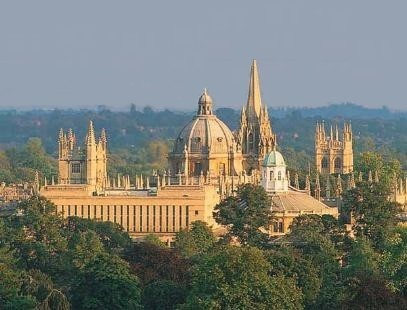

|
"The dreaming spires of Oxford." Glenn went over to England in 1965 on a Fulbright Fellowship and began working on a doctorate at Oxford University. He spent three years there, and then came back to the United States, where he taught two years at the University of Virginia, before going to the Indiana University campus in South Bend, where he was to spend most of his teaching career.
The domed building in the middle of the photograph above is the Radcliffe Camera, which housed part of the Oxford University library system. Glenn did some of his research in that library. |

| Glenn carried out other parts of his research in the Bodleian Library (shown above). He also worked in the library at Pusey House and in the library in the Ashmolean Museum. |

|
A view of some of the Oxford University buildings from the air.
The three earliest medieval European universities -- Oxford, Paris, and Bologna -- all came into existence during the twelfth century. Oxford University in particular still has a beautiful collection of distinguished medieval buildings, as can be seen in the photo above, intermixed with architecture from every subsequent era. When you are a student at the university, you are made aware at all times that you are at the heart of an extraordinary centuries-old tradition of western thought. |
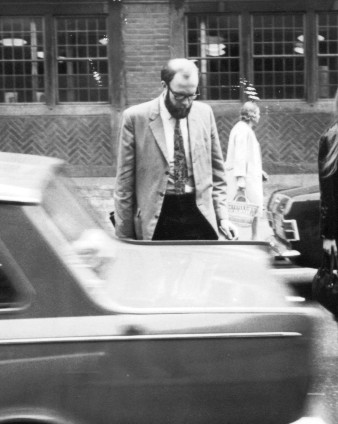
| This is Glenn crossing a street in downtown Oxford. |
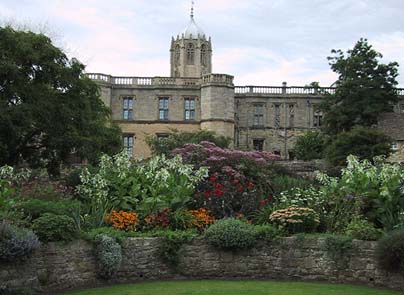
|
Glenn was a member of Linacre College, an Oxford University college for graduate students only. The students came from all over the world, including not just the British Isles, but also Australia, Holland, Germany, Egypt, Sudan, Nigeria, Israel, Italy, South Africa, and numerous other places.
Linacre College at that time was located right next to Christ Church, one of the most prestigious undergraduate colleges. The photo above is taken from the lawn of Linacre College and shows the flower gardens on that side of Christ Church, with Christ Church's Tom Tower in the background. |
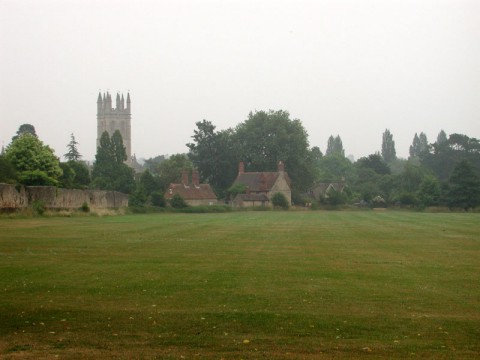
|
Behind Linacre College lay Christ Church meadows, which sometimes had cows grazing in it, and was almost completely filled with bright yellow daffodils in the Spring.
Glenn's official thesis supervisor was S. L. Greenslade, who was the Regius Professor of Ecclesiastical History at Christ Church. |

|
Glenn also worked closely with Peter Brown, the Late Roman historian at All Souls College, the Oxford college shown in the photo above.
Peter Brown was just making his name as a scholar with his beautiful biography of St. Augustine. Peter was married at that time to a Czechoslovakian psychiatrist, from whom he had learned how good psychiatrists can deduce what is going on in a patient's subconscious. Some of the enormous insights his book gave into St. Augustine's thoughts and feelings came from using those techniques. Glenn in turn learned a good deal from Peter about how to penetrate down below the surface of a historical character in order to reveal that person's inner attitudes and thoughts, and made use of those skills later on in the books which he wrote about the twelve step program. |
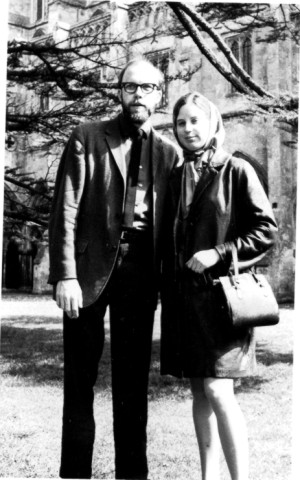
| Glenn (with his first wife Roberta) standing in front of one of the medieval buildings in Oxford. |

| One of the ways Oxford students like Glenn would relax was to go punting. A punt was a flat-bottomed boat which you pushed along with a long pole. Oxford lay at the point where the river Cherwell ran into the river Thames (which created a natural defensive moat around most of the city walls back in the middle ages). The Cherwell in particular was very shallow, as can be seen in this photo, which made it ideal for poling a boat. |
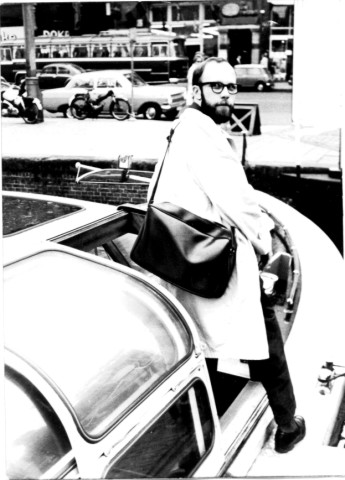
|
This is a good photo of Glenn from the period when he was a student at Oxford. This photo was taken around 1967 or 1968, when Glenn was visiting Amsterdam for a few days, so that is a Dutch canal boat that he is getting out of.
During his time at Oxford, he also made longer trips to study and attend university lectures in theology at New College in Edinburgh and at the University of Göttingen in Germany. He made another trip to Germany later on, traveling with Van A. Harvey (one of his professors at Southern Methodist University) to visit the University of Marburg, where there was a scholarly conference being held in honor of the famous New Testament scholar and existentialist theologian Rudolf Bultmann.
|